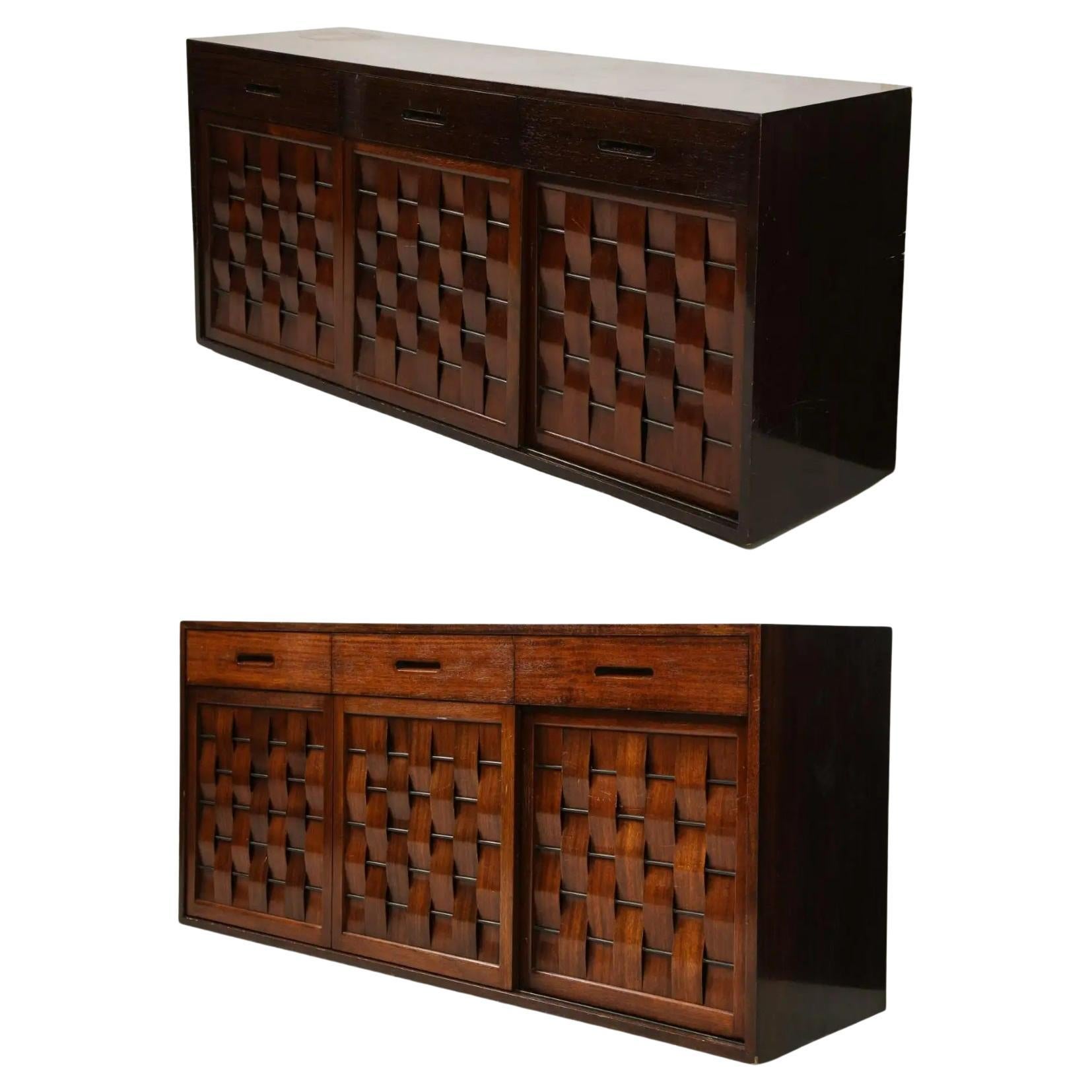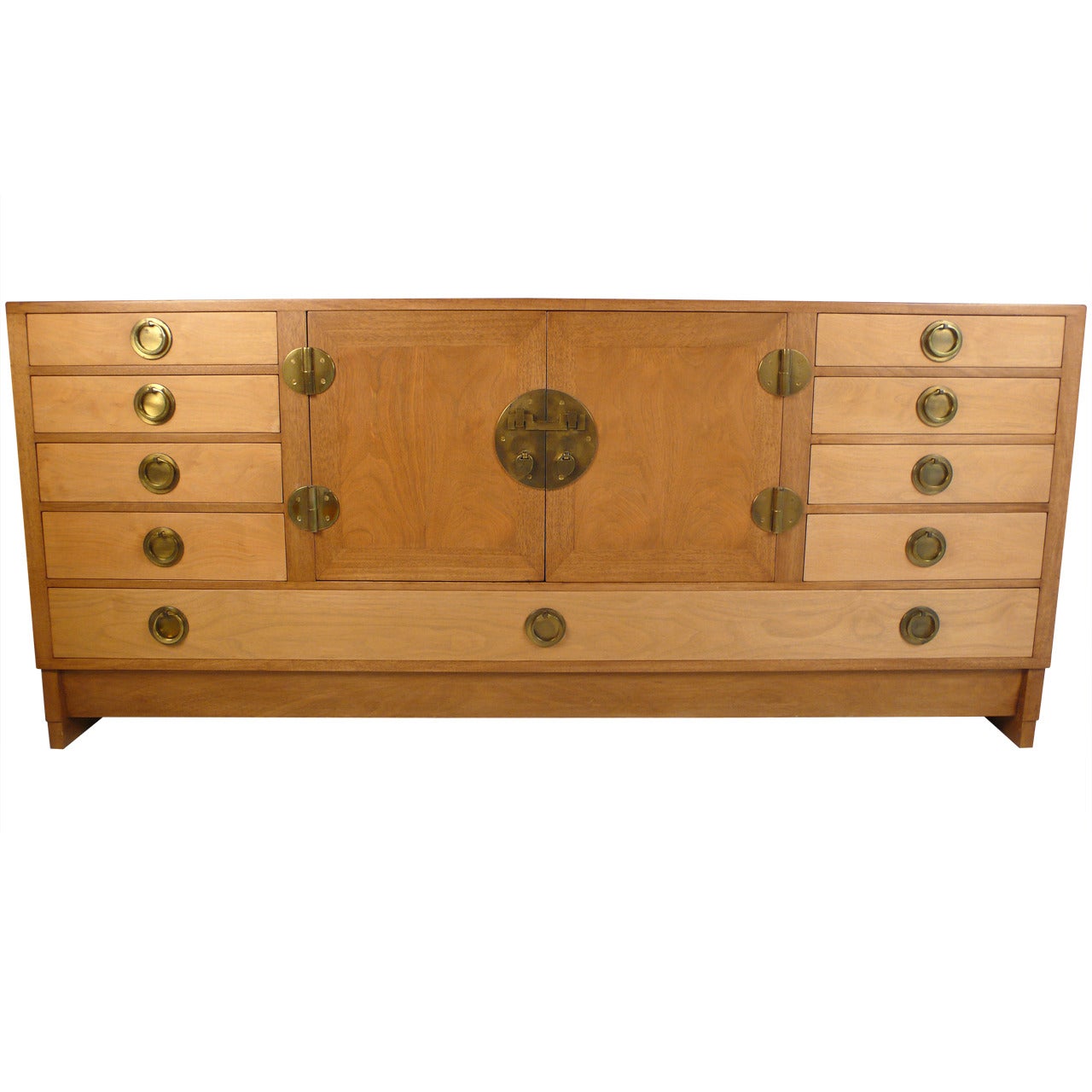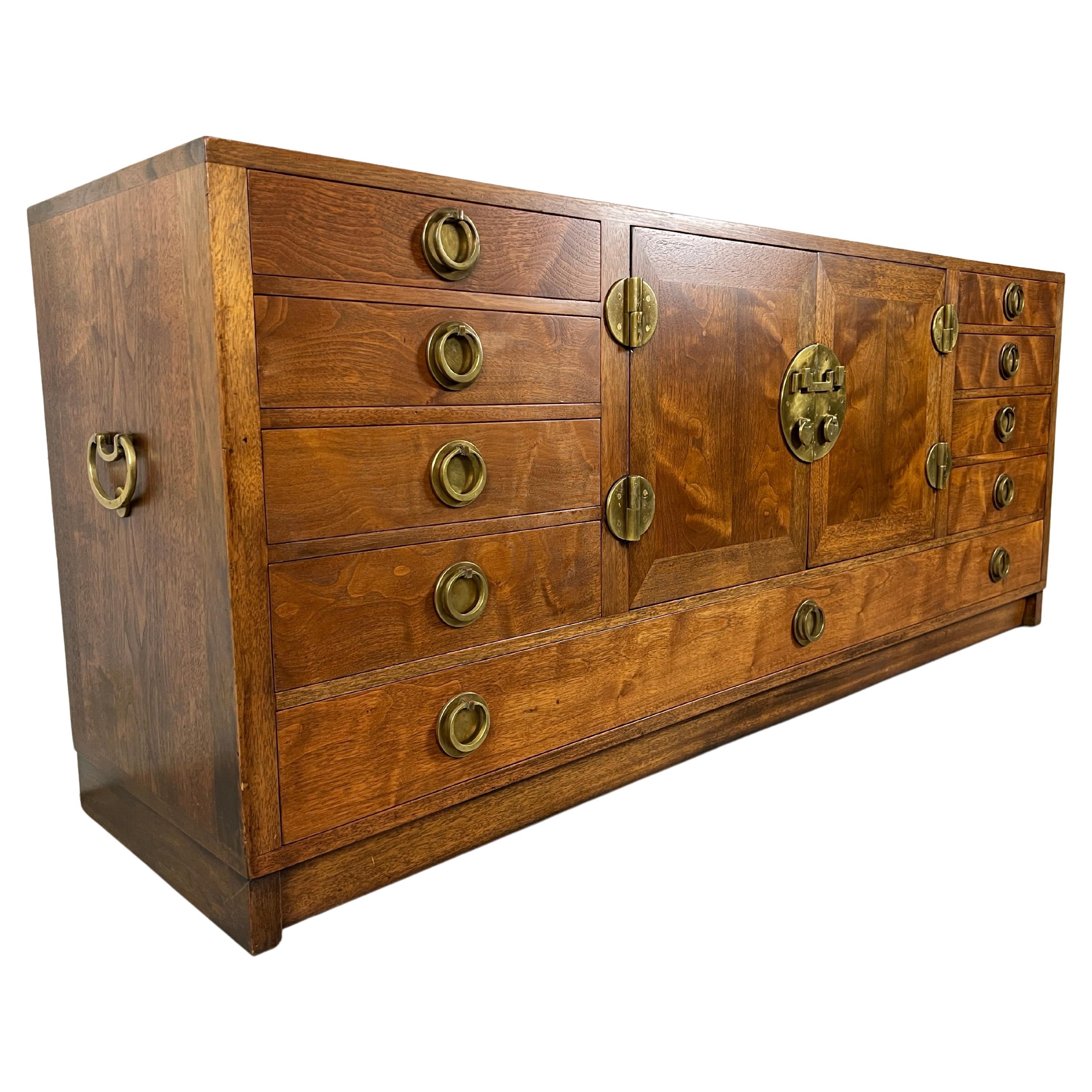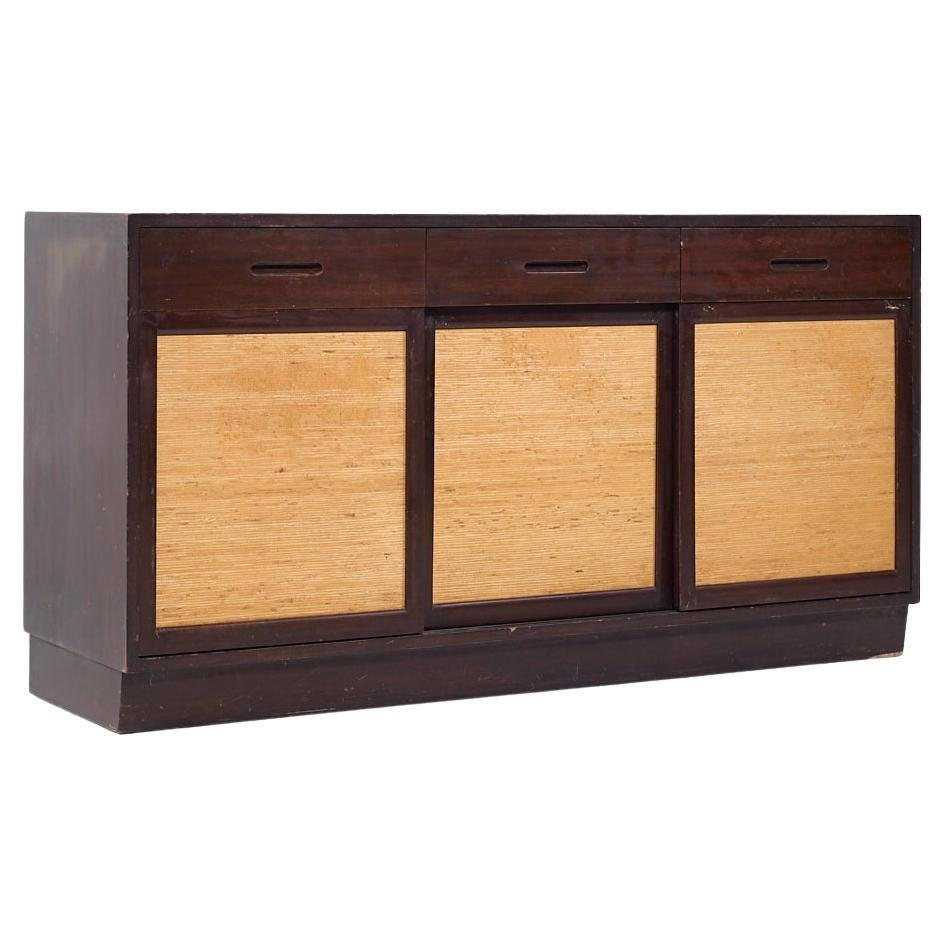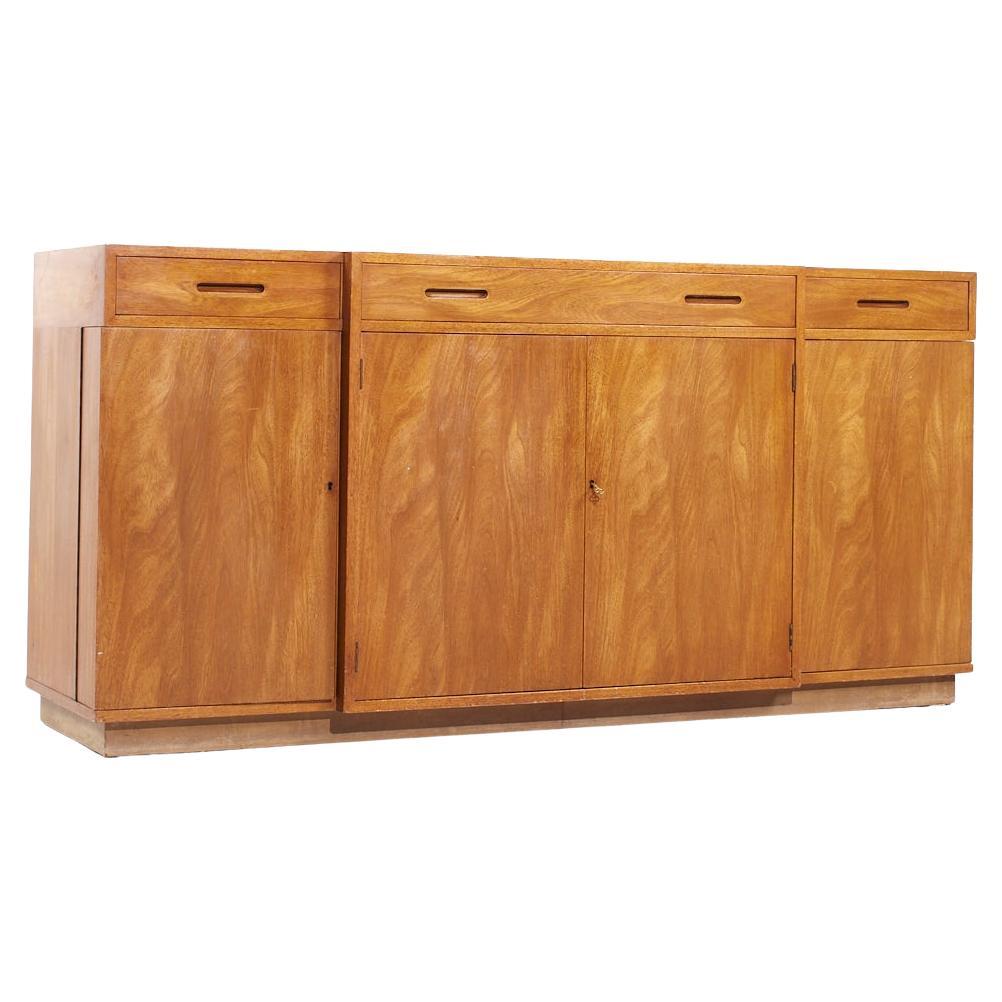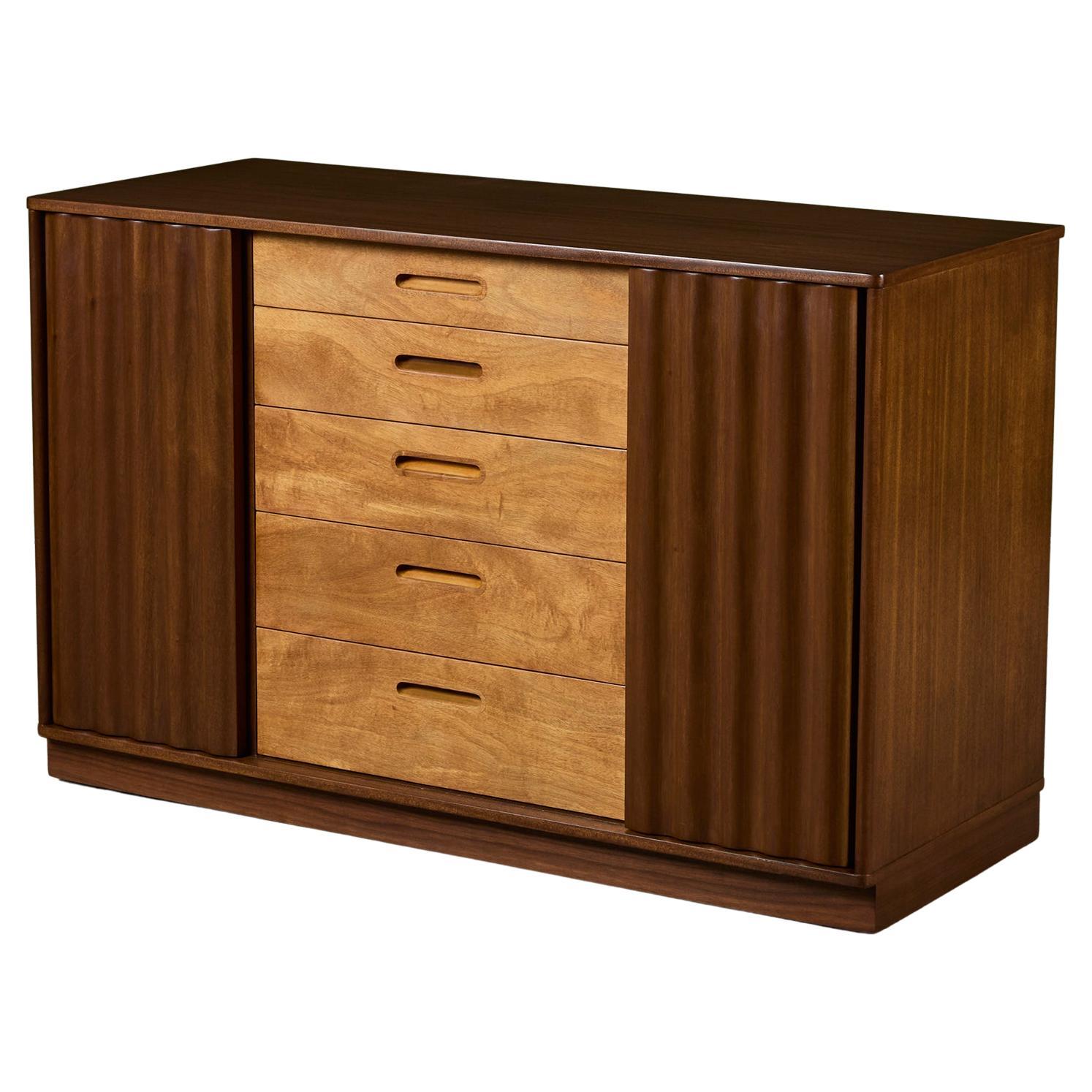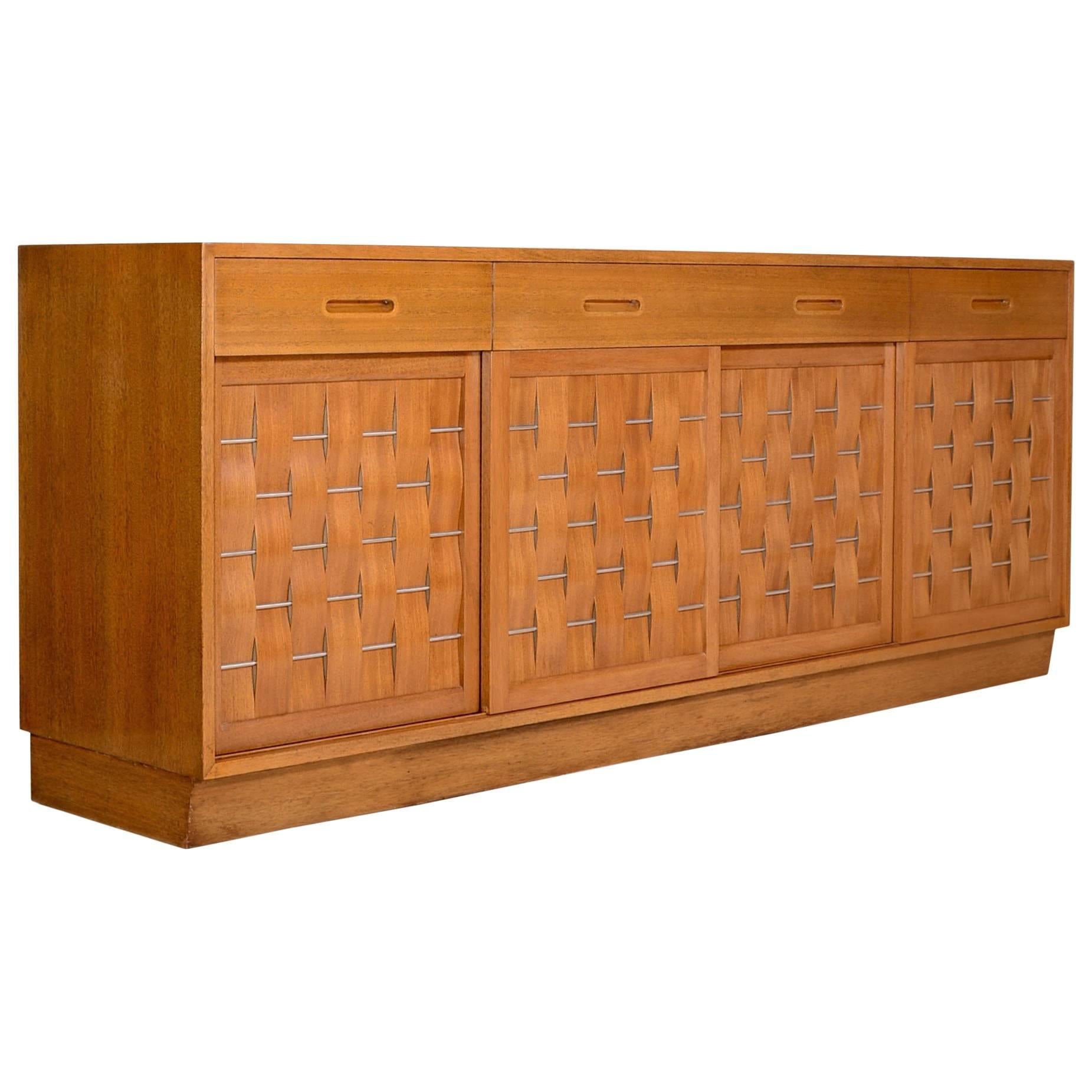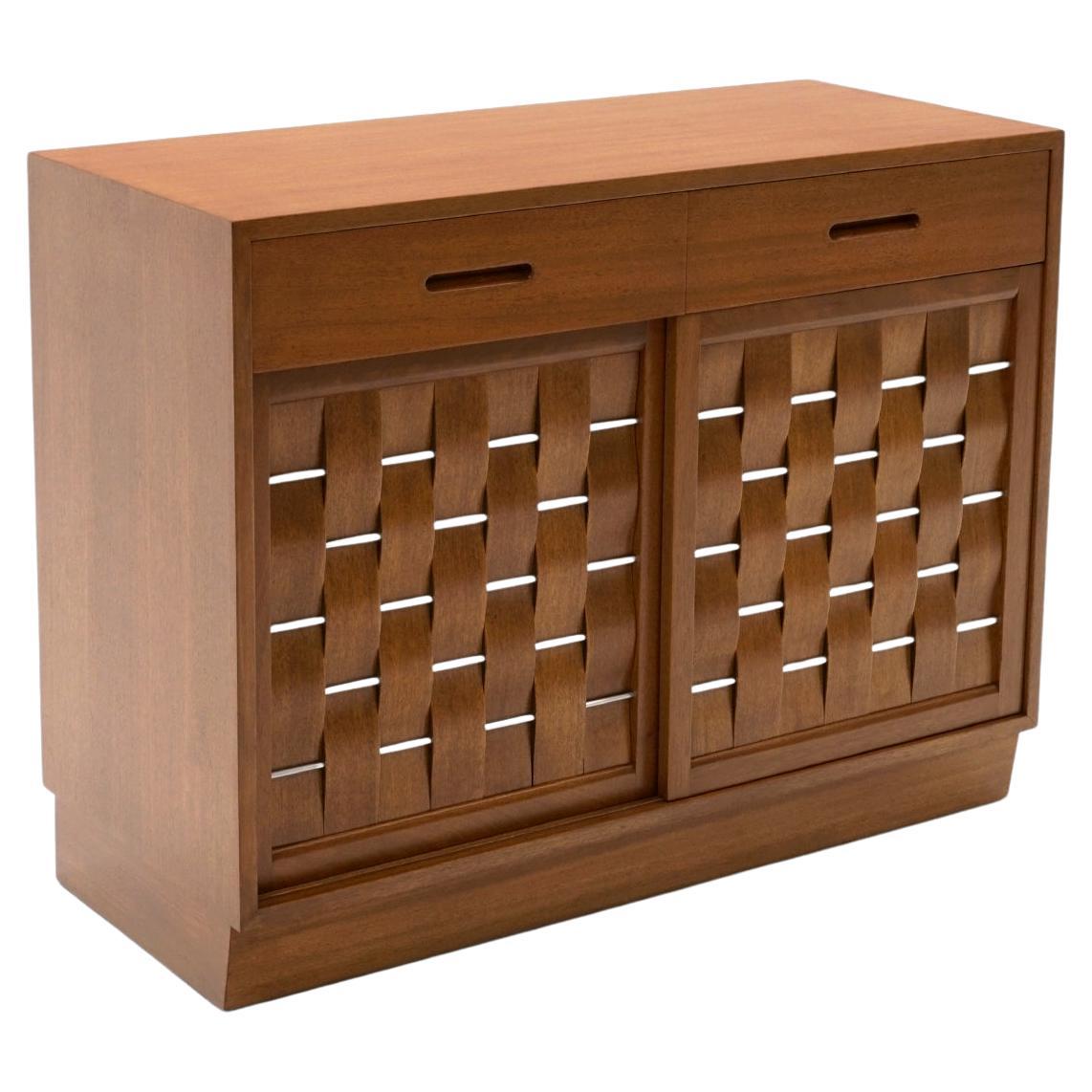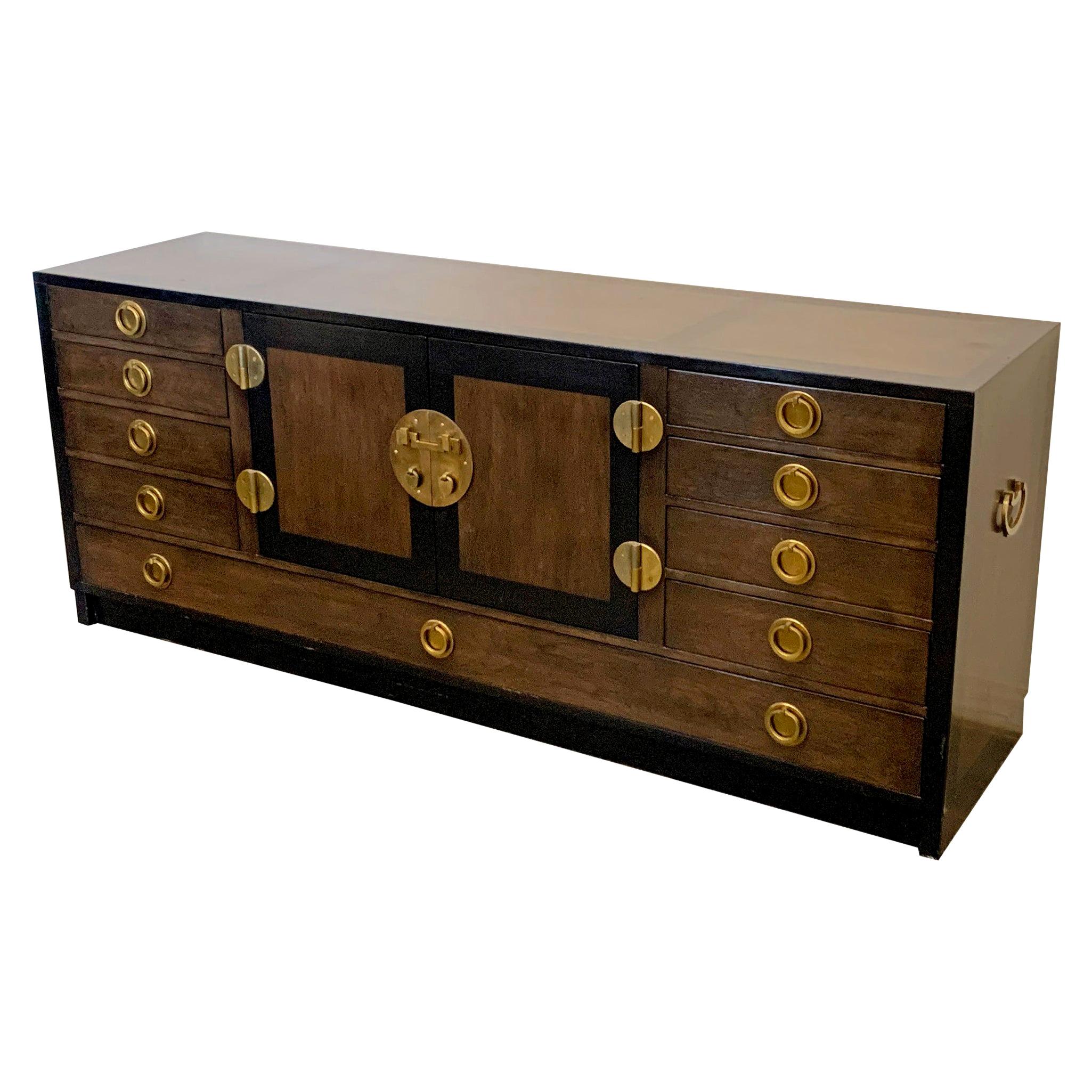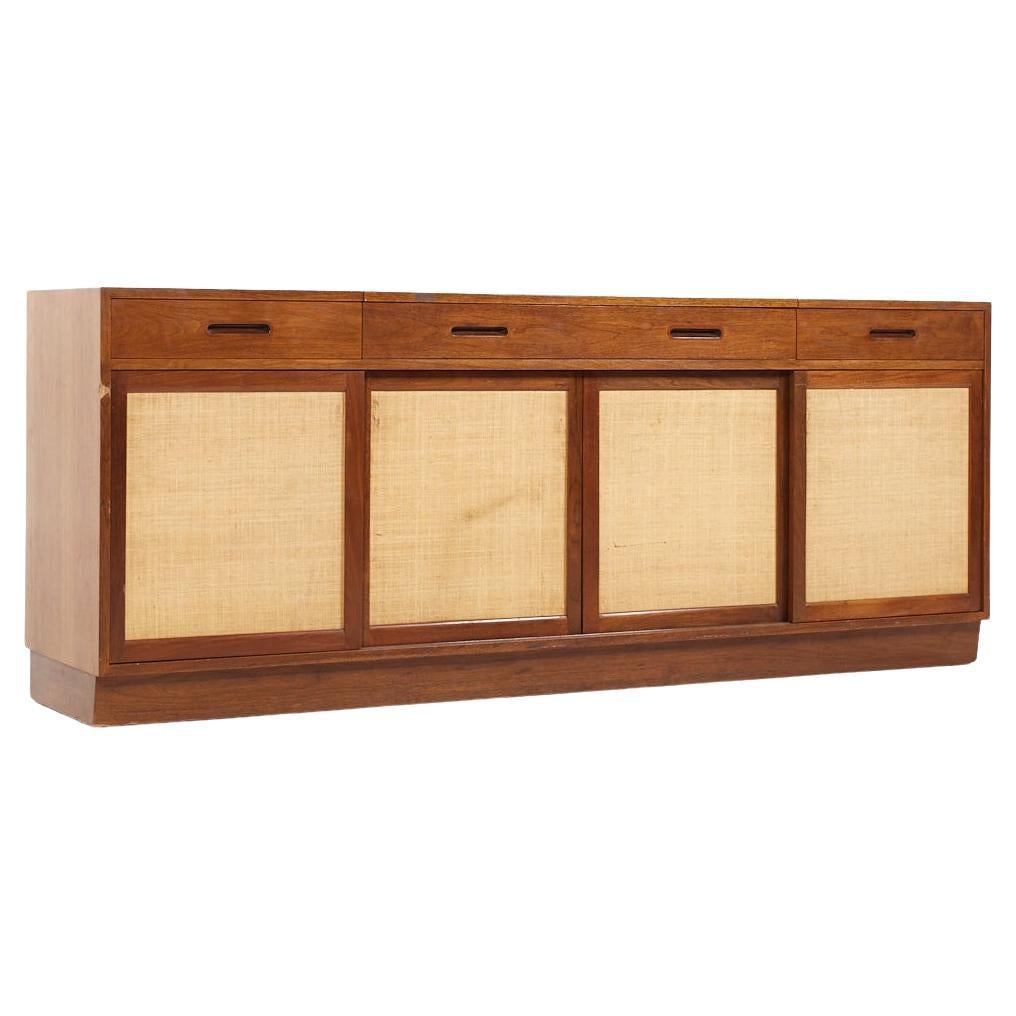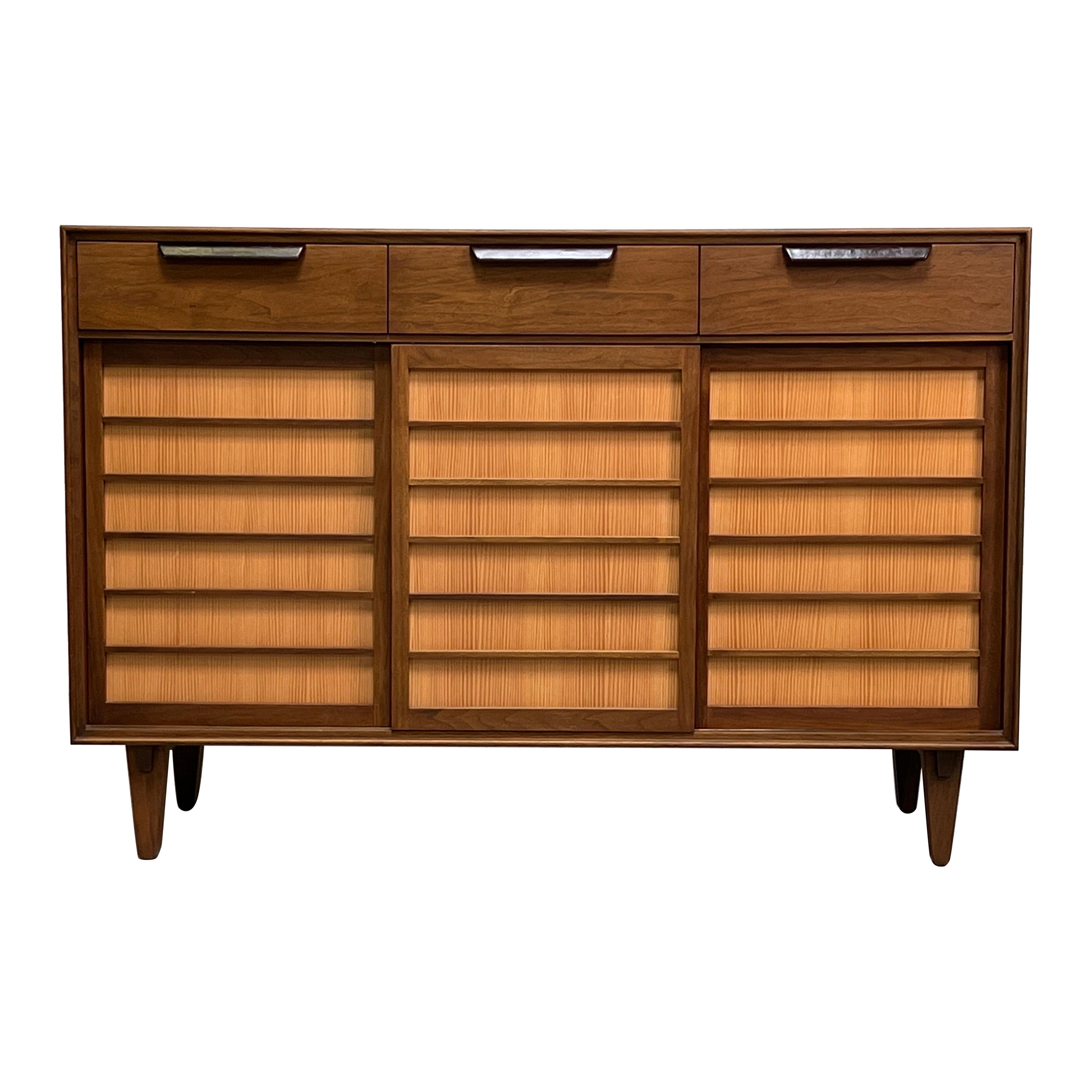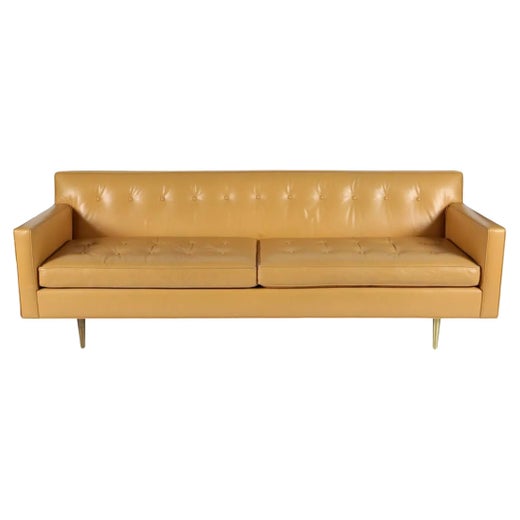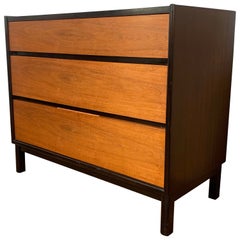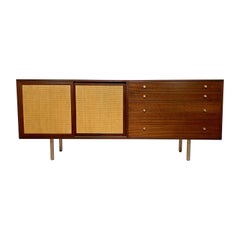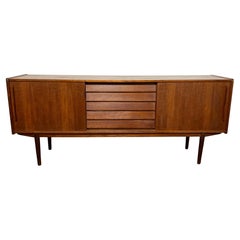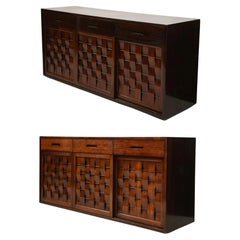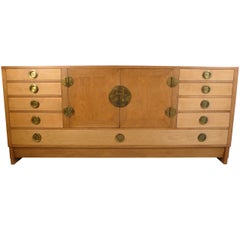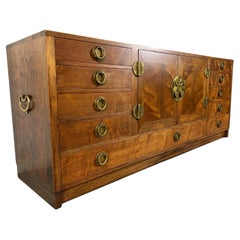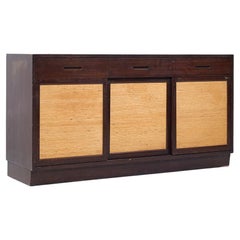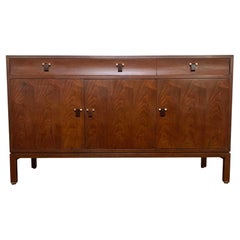
Edward Wormley for Dunbar Mahogany Credenza with Rosewood Pulls, circa 1950s
View Similar Items
Edward Wormley for Dunbar Mahogany Credenza with Rosewood Pulls, circa 1950s
About the Item
- Creator:Dunbar Furniture (Maker),Edward Wormley (Designer)
- Dimensions:Height: 32 in (81.28 cm)Width: 56 in (142.24 cm)Depth: 18 in (45.72 cm)
- Style:Mid-Century Modern (Of the Period)
- Materials and Techniques:
- Place of Origin:
- Period:
- Date of Manufacture:1950s
- Condition:Wear consistent with age and use. Minor touch ups to the right top corner and hinge screws replaced.
- Seller Location:Peabody, MA
- Reference Number:1stDibs: LU888034051822
Edward Wormley
As the longtime director of design for the Dunbar furniture company, Edward Wormley was, along with such peers as George Nelson at Herman Miller Inc., and Florence Knoll of Knoll Inc., one of the leading forces in bringing modern design into American homes in the mid-20th century. Not an axiomatic modernist, Wormley deeply appreciated traditional design, and consequently his vintage seating, storage cabinets, bar carts and other work has an understated warmth and a timeless quality that sets it apart from other furnishings of the era.
Wormley was born in rural Illinois and as a teenager took correspondence courses from the New York School of Interior Design. He later attended the Art Institute of Chicago but ran out of money for tuition before he could graduate. Marshall Field hired Wormley in 1930 to design a line of reproduction 18th-century English furniture; the following year he was hired by the Indiana-based Dunbar, where he quickly distinguished himself. It was a good match.
Dunbar was an unusual firm: it did not use automated production systems; its pieces were mostly hand-constructed. For his part, Wormley did not use metal as a major component of furniture; he liked craft elements such as caned seatbacks, tambour drawers, or the woven-wood cabinet fronts seen on his Model 5666 sideboard of 1956. He designed two lines for Dunbar each year — one traditional, one modern — until 1944, by which time the contemporary pieces had become the clear best sellers.
Many of Wormley’s signature pieces — chairs, sofas, tables and more — are modern interpretations of traditional forms. His 1946 Riemerschmid Chair — an example is in the collection of the Museum of Modern Art — recapitulates a late 19th-century German design. The long, slender finials of his Model 5580 dining chairs are based on those of Louis XVI chairs; his Listen-to-Me Chaise (1948) has a gentle Rococo curve; the “Precedent” line that Wormley designed for Drexel Furniture in 1947 is a simplified, pared-down take on muscular Georgian furniture. But he could invent new forms, as his Magazine table of 1953, with its bent wood pockets, and his tiered Magazine Tree (1947), both show. And Wormley kept his eye on design currents, creating a series of tables with tops that incorporate tiles and roundels by the great modern ceramicists Otto and Gertrud Natzler.
As the vintage items on 1stDibs demonstrate, Edward Wormley conceived of a subdued sort of modernism, designing furniture that fits into any decorating scheme and does not shout for attention.
Dunbar Furniture
Revered for its handcrafted and highly collectible mid-century modern sofas, coffee tables and other furnishings, Dunbar Furniture was founded in 1910 in Berne, Indiana, but it didn’t gain widespread recognition until the ’30s, following the introduction of its president to a designer who would leave an indelible mark on the company’s legacy: Edward Wormley.
After a stint at the Art Institute of Chicago, the Oswego, Illinois-born Wormley worked as an interior designer for Marshall Field’s before joining Dunbar in 1931. Initially focused on developing the company’s cheapest furniture line, which could be bought with soap coupons, he was soon leading Dunbar Furniture into a new era of residential furniture for modern American homes. He would serve as the company’s design director for over three decades, designing about 150 pieces each year.
During that time, he oversaw the production of designs in a wide range of materials, with influences ranging from Scandinavian modernism to Art Deco. There were modern upholstery pieces, like swiveling lounge chairs and low-slung sofas, and experiments with textural wood on bar carts and cabinets as well as minimal, sculptural tables and functional office furniture. A passionate collector of Tiffany Studios lamps, Wormley used their glass tiles in Dunbar tables in 1956. He also worked on the reproduction of pieces by designers such as Jean-Michel Frank and Richard Riemerschmid.
One standout Dunbar Furniture collection was Janus, introduced in the 1960s, with Austrian-born ceramicists Otto and Gertrud Natzler. These pieces see the Natzlers’ uniquely artful ceramic tiles set into several styles of wooden tables. They remain some of the most sought-after mid-century modern Dunbar pieces on the vintage market today. During the peak of his design career and, indeed, the height of Dunbar Furniture’s history, Wormley amassed a whopping 30 Good Design awards between 1950 and 1955 through the “Good Design” exhibition, hosted by the Chicago Merchandise Mart and the Museum of Modern Art. Dunbar today produces a limited selection of archival Wormley designs, but many sales of original Dunbar pieces are through the resale market.
Find a collection of authentic vintage Dunbar Furniture today on 1stDibs.
More From This Seller
View AllVintage 1960s American Mid-Century Modern Commodes and Chests of Drawers
Mahogany, Rosewood
Vintage 1950s American Mid-Century Modern Credenzas
Brass
Vintage 1960s American Mid-Century Modern Benches
Upholstery, Rosewood
Vintage 1960s Swedish Scandinavian Modern Credenzas
Teak
Vintage 1980s American Post-Modern Credenzas
Grasscloth, Wood
Vintage 1950s American Mid-Century Modern Chandeliers and Pendants
Brass, Metal
You May Also Like
Vintage 1950s American Mid-Century Modern Credenzas
Walnut
Vintage 1950s Unknown Mid-Century Modern Cabinets
Brass
20th Century North American Mid-Century Modern Credenzas
Brass
Vintage 1970s American Mid-Century Modern Credenzas
Mahogany
Vintage 1970s American Mid-Century Modern Credenzas
Mahogany
Vintage 1950s American Mid-Century Modern Credenzas
Mahogany, Birch
